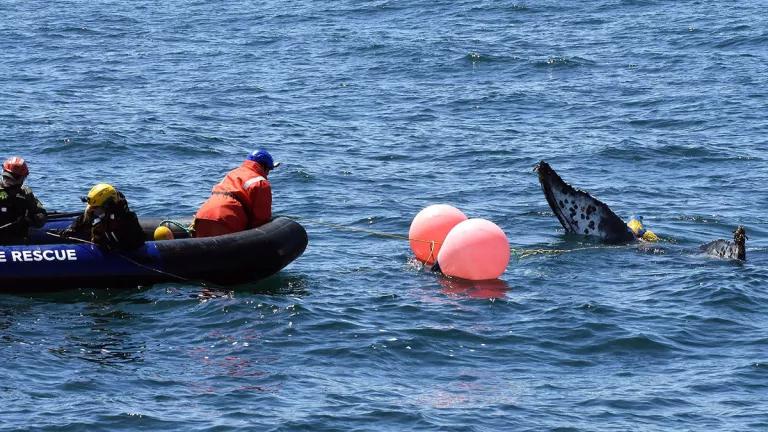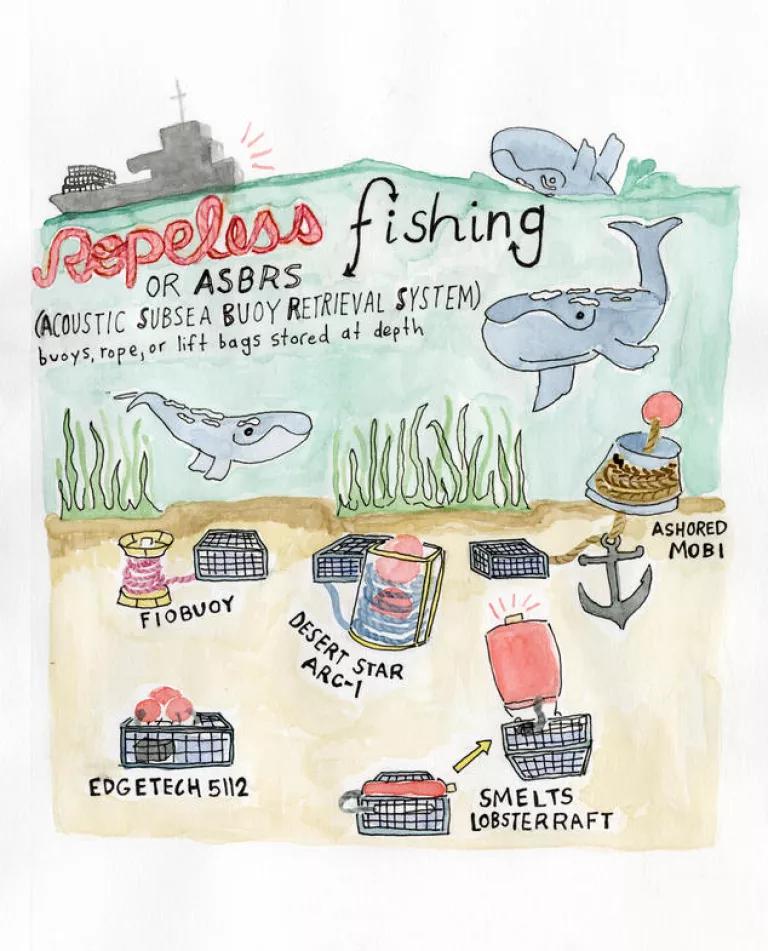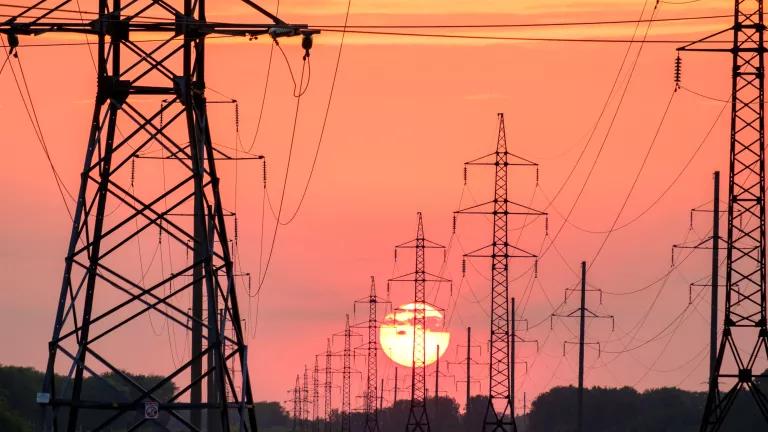California Leads the Nation on Ropeless Gear Regulations
New regulations published by the California Department of Fish and Wildlife will reduce entanglements of endangered humpback whales, blue whales, and Pacific leatherback sea turtles in the state’s commercial Dungeness crab fishery.

The new regulations will help reduce risk of entanglements, like this one in Monterey Bay where a humpback whale was anchored in place by crab pots, fishing lines, and buoys
New regulations published by the California Department of Fish and Wildlife will reduce entanglements of endangered humpback whales, blue whales, and Pacific leatherback sea turtles in the state’s commercial Dungeness crab fishery. In an unprecedented move, the new regulations approve the use of ropeless (or “pop-up”) fishing gear for commercial fishing in fishery closures. The regulations go into effect on November 1.
Ropeless gear is the only reliable means to eliminate entanglement risk while keeping fishers on the water. By explicitly regulating ropeless gear—for example, by enabling its use within fishery closures—California is sending an important signal that ropeless gear is a viable solution to end entanglements. The new regulations will also help advance the research and development of this technology, moving it more rapidly towards wide-scale commercial use.
The new rules also meaningfully reduce entanglement risk in several other ways: The fishery will be required to reduce the number of traps fished or stop fishing in certain areas when higher concentrations of whale and sea turtles are present. Areas can also be closed due to confirmed whale or sea turtle entanglements. And fishers are required to report the location, depth, and quantity of traps they are using, and require a transition to electronic monitoring of fishing locations by 2023.
The California Department of Fish and Wildlife released the final regulations after an extensive stakeholder process involving public input from Californians through their Whale Safe Fisheries program. NRDC joined more than thirty other environmental groups in calling on the Department to make the regulations as strong as possible.
California’s efforts also include a recent disbursement by the California Ocean Protection Council of $2.9 million in funding for whale entanglement risk reduction projects, including gear innovations testing within the Dungeness crab fishery.

The importance of California’s leadership in the fight to end entanglements—cannot be understated. The International Whaling Commission identifies entanglements as the main human-caused threat to large whales, estimating that 300,000 whales, dolphins, and porpoises die from entanglement in fishing gear each year worldwide. Entanglement inflicts profound physical trauma and suffering, and an animal may endure injuries for weeks or months before succumbing. The stress of entanglement can also cause negative health issues and impair reproduction.
Entanglements are increasing in California’s waters and causing the humpback whale population to slip into decline. On the East Coast, entanglement is driving the critically endangered North Atlantic right whale perilously close to extinction.
The federal government should follow California’s lead and take similar steps to protect North Atlantic right whales. The delayed draft federal regulations for North Atlantic right whales are not expected to include any provisions on ropeless gear even though the technology may hold the key to saving the species.
Thank you, California, for taking strong measures to protect the state’s iconic marine life from entanglement and serve as a model for the rest of the nation!
If you see an entangled whale off California’s coast, call (877) SOS-WHALE (877–767–9425) or hail the U.S. Coast Guard on VHF CH-16.




